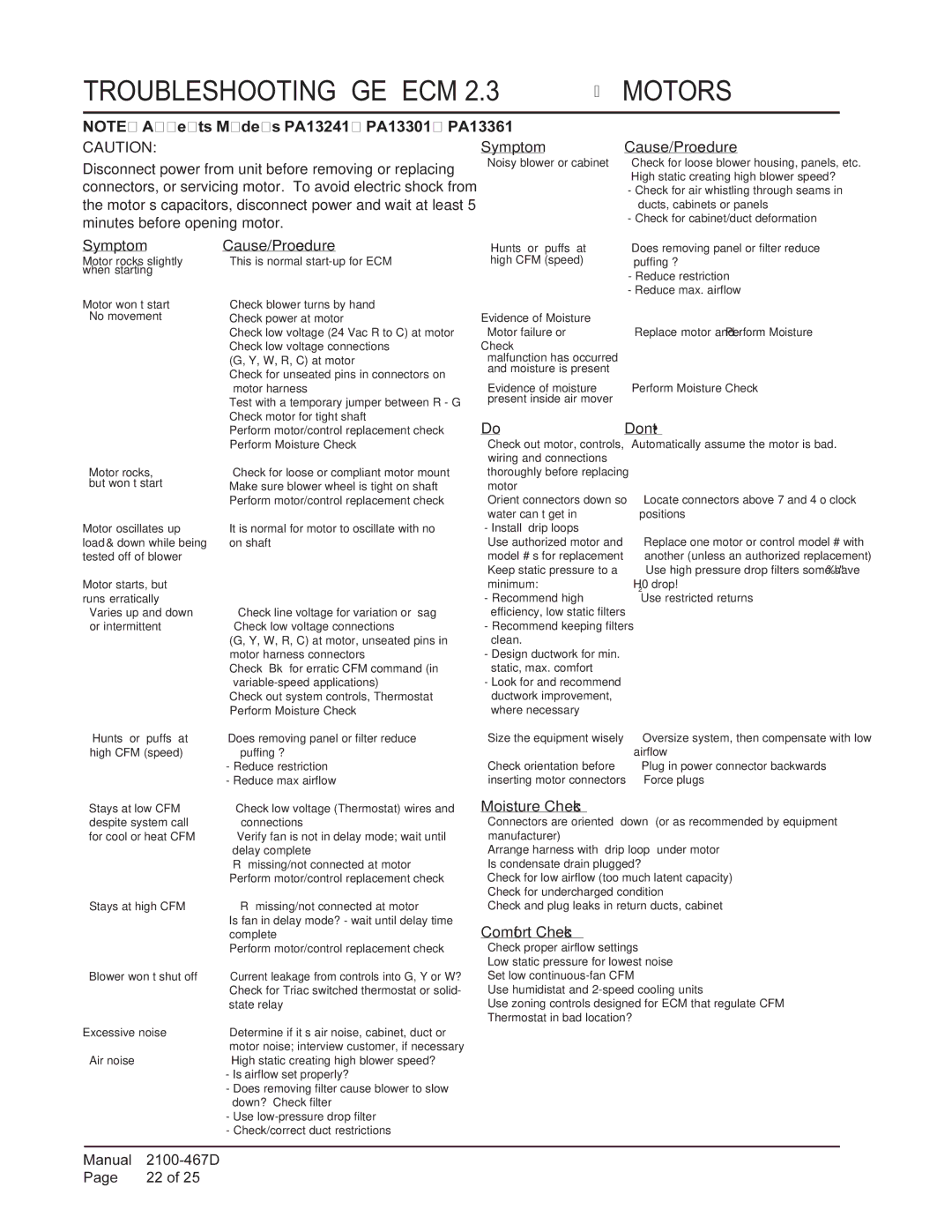PA13361-B, PA13301-A, PA13241-A, PA13361-A specifications
The Bard PA13361-B, PA13361-A, PA13241-A, and PA13301-A are high-efficiency packaged air conditioning units known for their exceptional performance in residential and commercial settings. These models are designed to provide effective cooling solutions while maximizing energy efficiency and comfort.One of the standout features of these models is their robust construction, made to withstand varying environmental conditions. The units are engineered with corrosion-resistant materials, making them ideal for both indoor and outdoor applications. This durability ensures that they can operate effectively in diverse climates, providing consistent cooling performance year-round.
The PA13361-B and PA13361-A models are equipped with advanced thermostatic control systems that allow for precise temperature adjustments. This technology enhances user comfort and contributes to energy savings by ensuring the system operates only when needed. Users can easily manage their indoor environment through intuitive controls, making it straightforward to tailor the cooling output to their preferences.
In terms of energy efficiency, these Bard units are designed to operate at low energy consumption levels while delivering powerful cooling capabilities. The integration of high-efficiency compressors and refrigerants contributes substantially to reducing energy costs, making these models an environmentally friendly choice for consumers. With a high Seasonal Energy Efficiency Ratio (SEER), these air conditioning units not only comply with but often exceed industry standards.
The PA13241-A and PA13301-A models introduce enhanced airflow technology, which allows for better air distribution throughout the space. This feature ensures that every corner of the room receives adequate cooling, eliminating hot spots and ensuring comfort for occupants.
Furthermore, the simplicity of installation and maintenance adds to the appeal of these models. Bard units are designed with serviceability in mind, allowing technicians to perform routine maintenance with ease. This accessibility can lead to reduced downtime and enhanced longevity of the equipment.
In summary, the Bard PA13361-B, PA13361-A, PA13241-A, and PA13301-A packaged air conditioning units are robust, efficient, and user-friendly systems. Their advanced features, energy-efficient operation, and durable construction make them a top choice for those seeking reliable cooling solutions in various settings. Whether for residential or commercial use, these models offer performance and comfort that users can depend on.

